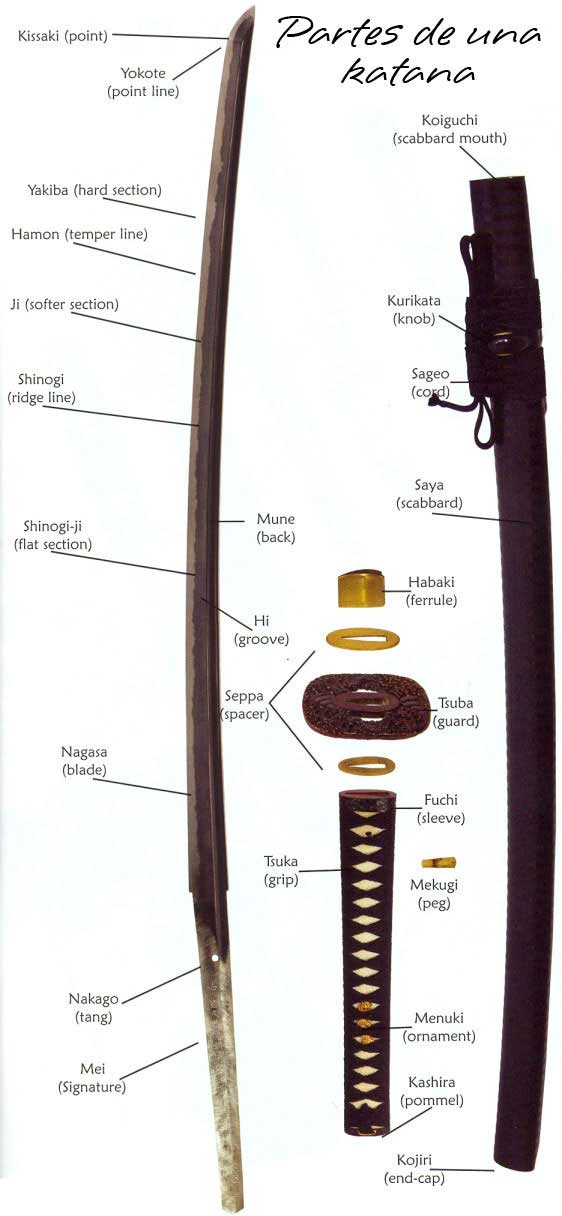What is the Habaki?
The Habaki is a fundamental piece in the structure of a katana, the iconic Japanese sword that symbolizes the history and culture of the samurai. This metal collar sits at the base of the blade, between the blade itself and the Saya, which is the wooden scabbard designed to protect and store the katana.
With a design that can vary in materials such as brass or silver, the Habaki not only serves a practical function but also provides significant aesthetic value. In its most basic form, the Habaki secures the katana blade in place within the Saya, preventing it from moving or sliding, which is crucial for user safety and maintaining the integrity of the sword.
In addition to its holding function, the Habaki plays an essential role in protecting the blade, safeguarding it from damage and scratches that may occur when drawing or sheathing the sword. This preventive function helps keep the blade sharp and ready for use, as wear and tear on the blade can compromise both its aesthetics and efficacy in combat.
Aesthetically, the Habaki also allows artisans to showcase their craftsmanship in sword making, as many are decorated with intricate designs and decorative details that reflect the culture, lineage, and social status of the owner. This ornamentation not only beautifies the sword but can also be a symbol of identity and tradition.
Caring for the Habaki is just as important as its function. It is advisable to keep it clean and lubricated to avoid oxidation and corrosion. Katana owners should also protect the Habaki from impacts and falls, as any damage may compromise its ability to effectively hold the blade.

In short, the Habaki is an essential component both functionally and aesthetically in the katana, reflecting the rich cultural heritage and expertise of the artisans who craft them. By understanding and properly caring for this piece, katana owners can ensure not only the longevity of the weapon but also its beauty and expressiveness as a symbol of an ancient tradition.
















